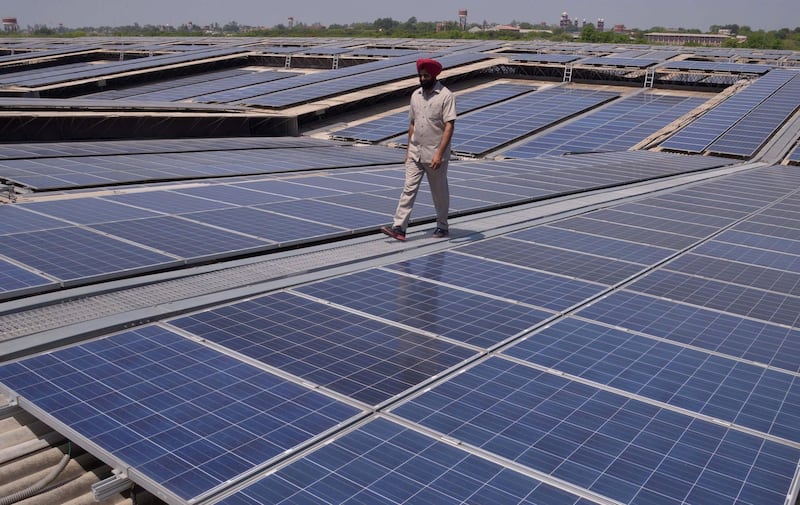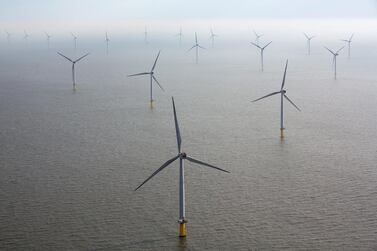This column is part of a series of exclusive insights ahead of Abu Dhabi Sustainability Week, being held from January 11-18, 2020.
According to the International Renewable Energy Agency (IRENA), India ranks fourth worldwide for installed solar and wind power capacity. The fact that overall electricity generation may triple over the next 20 years is more good news for India’s clean energy sector.
In November, I visited the 2.25GW Bhadla Solar Park under development in the Jodhpur district of Rajasthan — a vivid reminder of the vast potential India has to offer in terms of large-scale renewable energy projects.
Underpinning this growth, of course, is India’s powerful economy, now the sixth-largest in the world. Real GDP has increased five-fold since the turn of the century and despite the current uncertainty surrounding global trade, the country remains one of the fastest-growing large economies.
Just as importantly, South Asia is the youngest region in Asia. As many as 150 million people could enter its labour market by 2030, the vast majority from India. Besides jobs, this points to more demand for goods, services and affordable energy. Today, per capita power consumption in India is barely one-tenth of that in the United States, further evidence that India’s power sector has clear scope for growth.
Masdar’s recent investment of $150 million (Dh550.9m) in Hero Future Energies (HFE) was therefore a natural step. The owners of HFE are family members of the Hero Group, famous in India for making motorbikes. Today, the company has acquired a sizeable renewable energy business — one that already has 1.2 gigawatts (GW) of wind and solar power in operation, with 500 megawatts (MW) under construction and 200MW planned.
HFE boasts ready access to capital, an expert management team, robust corporate governance (the International Finance Corporation is also a shareholder), and a record of successful project delivery across India. Furthermore, its knowledge of the local market and supply chain is unmatched.
Considering the shared vision and skills of our two companies, it was a straightforward decision for Masdar to invest in HFE. Masdar is also well-positioned to support HFE’s expansion outside India, having delivered projects in more than 25 countries since 2006.
Renewable energy resources are abundant in India. However, government support has been key to the emergence of the country’s wind and solar power markets. Power purchase agreements (PPAs) backed by the central government have unlocked credit support, enabling prices to fall. Meanwhile, most state governments have adopted their own renewable energy procurement targets.
More recently, the authorities have enacted market reforms in response to the approaching global economic headwinds, reducing the base corporate tax rate from 30 to 22 per cent and proposing changes to the way dividend taxes are levied. These forward-thinking measures will benefit India’s clean energy sector, besides providing a welcome boost to spending and inward investment for the economy as a whole.
Admittedly, margins for solar and wind project developers have come under pressure due to increased competition and the lower risk profile associated with renewable energy generally. This has led to electricity tariffs from solar and wind power in India dropping by half since 2016.
On the other hand, cheaper renewables are diverting investment away from electricity generation based on fossil fuels, especially coal. Longer term, they are helping to whet the appetite of investors for new solutions integrating clean energy. India has potential for clean technologies besides utility-scale solar and wind power, such as battery storage and electric vehicles - two sectors that are gaining ground in the country where Masdar is already active.
Speaking at the UN Climate Action Summit in September, Prime Minister Narendra Modi reiterated India’s commitment to deliver on its sustainability goals, including more renewable energy, cleaner forms of transportation, and enhanced water conservation. Echoing the words of Mahatma Gandhi, he told the audience in New York “an ounce of practice is worth tons of preaching”. India’s Paris Agreement climate pledge includes generating 40 per cent of its power from carbon-free sources by 2030.
That commitment will be demonstrated again during Abu Dhabi Sustainability Week in January, with dozens of companies confirmed to exhibit inside India’s national pavilion at the World Future Energy Summit. ADSW 2019 alone announced business deals worth $11 billion, the majority focused on India.
Alongside Saudi Arabia and the other highly promising renewables markets opening up in the Middle East & North Africa, the Indian subcontinent represents a global investment opportunity right on our doorstep.
Mohamed Jameel Al Ramahi is the chief executive of Masdar








